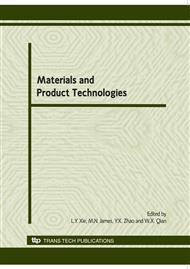p.733
p.738
p.743
p.748
p.753
p.758
p.762
p.767
p.775
Analysis of Thermal Properties of Super-High Speed Hybrid Journal Bearing Based on ANSYS
Abstract:
Hybrid journal bearings are used in the high and super high speed cases mainly, such as the super-high speed spindle system. Since the bearing operates under high speed conditions, the excessive temperature rise of the bearing is a major reason to lower the accuracy of the main shaft system and limit the bearings working speed higher, as a result, restrict the bearing applications. In this paper, the thermal properties and the heat mechanism of such bearings are analyzed. The mathematical model of hybrid journal bearing is established to analyze the mechanism of generating heat. In addition, the temperature field distribution for the certain hybrid journal bearing at speed of 10000 rpm is studied by means of software ANSYS considering the heat transfer characters between fluid and solid. An improved measure about temperature rise of hybrid journal bearing is presented.
Info:
Periodical:
Pages:
753-757
Citation:
Online since:
June 2010
Authors:
Keywords:
Price:
Сopyright:
© 2010 Trans Tech Publications Ltd. All Rights Reserved
Share:
Citation:


